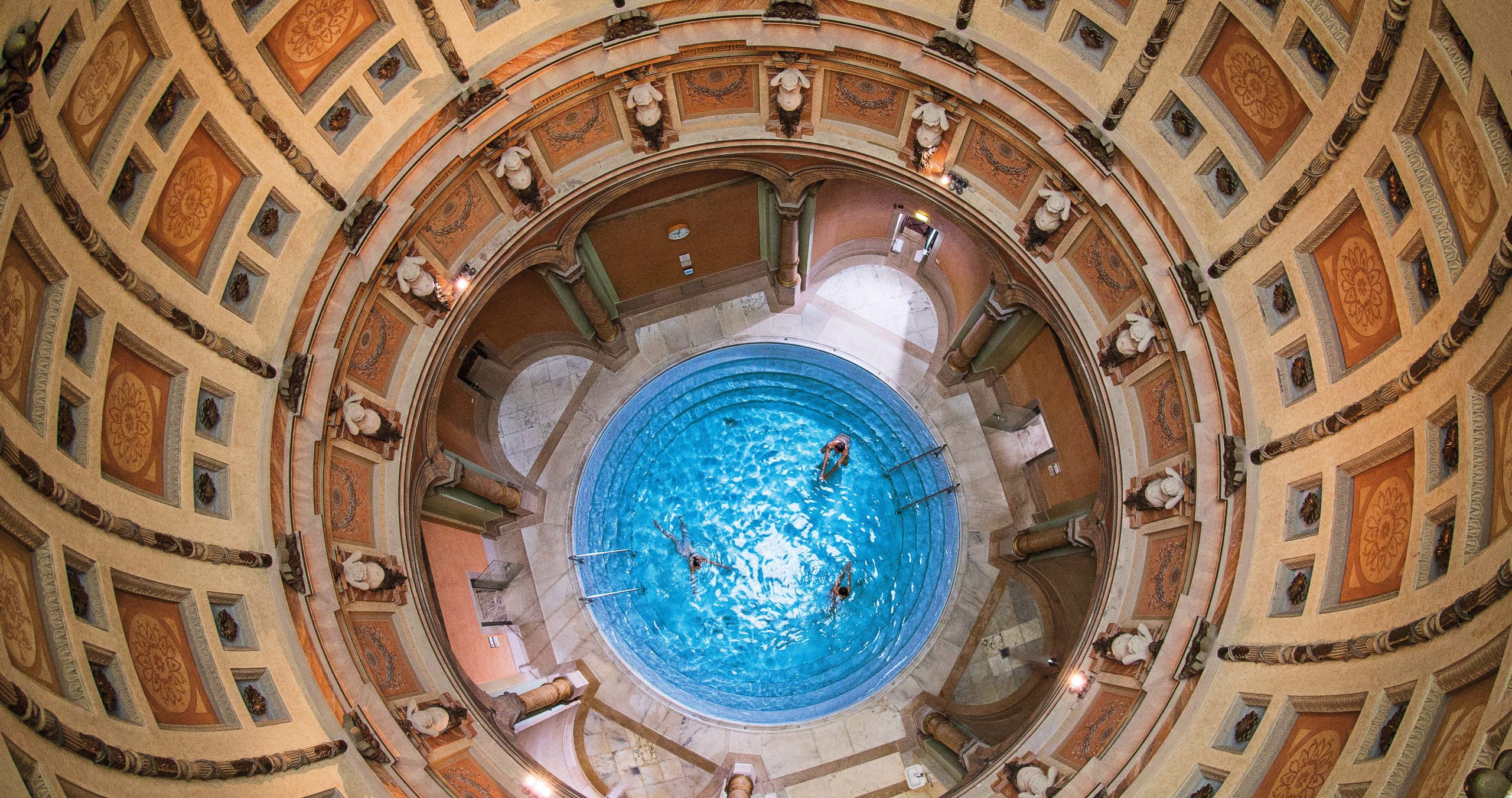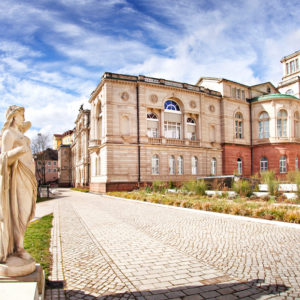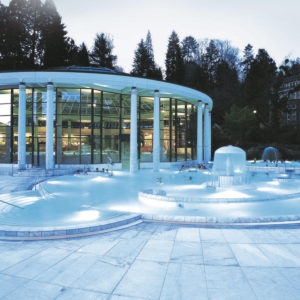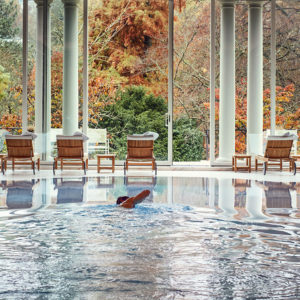
From deep beneath the cobbled streets of Baden-Baden, some 800,000 liters of mineral-infused thermal waters bubble up daily, a distinctive feature of life in this southwestern German town. Credit the Romans for building the city’s first spa (Baden-Baden literally means “baths, baths”), which they used to treat war injuries and for rest, relaxation, and socialization. There were even spa areas reserved for horses. Baden-Baden, 2,000 years on, still draws visitors with its healing waters, which flow through 12 natural springs at temperatures reaching 154°F (68°C). The city garnered new attention in 2021 when it was awarded UNESCO World Heritage status along with 10 other European towns all known for their historic spas.
Here’s a look at four must-visit spas in Baden-Baden, each with its own specialty and personality.
 Famously described by Mark Twain as a facility housing “every bath ever invented,” Friedrichsbad,Baden-Baden’s oldest and most traditional spa, makes use of some of the very same facilities first constructed by the Romans. The nude spa (which segregates men and women on Monday, Thursday, and Saturday but otherwise offers co-ed bathing) is located within a Renaissance-style building dating from 1877. After a shower beneath jets of thermal water, spa goers relax on warm wooden beds in a hot air room beneath a ceiling of hand-painted 19th-century majolica tiles. Next comes a circuit of 17 thermal steam, bubble, and soaking pools of varying temperatures. The three-hour experience ends with a swim beneath a soaring Renaissance-style dome, a plunge in a 64°F pool, and warm sheets for drying off.
Famously described by Mark Twain as a facility housing “every bath ever invented,” Friedrichsbad,Baden-Baden’s oldest and most traditional spa, makes use of some of the very same facilities first constructed by the Romans. The nude spa (which segregates men and women on Monday, Thursday, and Saturday but otherwise offers co-ed bathing) is located within a Renaissance-style building dating from 1877. After a shower beneath jets of thermal water, spa goers relax on warm wooden beds in a hot air room beneath a ceiling of hand-painted 19th-century majolica tiles. Next comes a circuit of 17 thermal steam, bubble, and soaking pools of varying temperatures. The three-hour experience ends with a swim beneath a soaring Renaissance-style dome, a plunge in a 64°F pool, and warm sheets for drying off.
 The most modern of Baden-Baden’s spas is Caracalla, a Roman-style complex named for the second-century emperor who originated the city’s spa culture. A massive, filigreed dome soars over Caracalla’s indoor pool, where guests soak and enjoy massage jets in water supplied by the city’s mineral springs. Outside, two large marble pools feature waterfalls and jets and are surrounded by a broad, sunny lawn. The outdoor pools are particularly popular in winter, offering a warm contrast to the crisp air and surroundings of pure white snow. Additional features at Caracalla include an indoor rock grotto with hot and cool water pools, a sauna, a steam room, and a brine inhalation room. Swimwear is worn in all areas of Caracalla except the sauna.
The most modern of Baden-Baden’s spas is Caracalla, a Roman-style complex named for the second-century emperor who originated the city’s spa culture. A massive, filigreed dome soars over Caracalla’s indoor pool, where guests soak and enjoy massage jets in water supplied by the city’s mineral springs. Outside, two large marble pools feature waterfalls and jets and are surrounded by a broad, sunny lawn. The outdoor pools are particularly popular in winter, offering a warm contrast to the crisp air and surroundings of pure white snow. Additional features at Caracalla include an indoor rock grotto with hot and cool water pools, a sauna, a steam room, and a brine inhalation room. Swimwear is worn in all areas of Caracalla except the sauna.

Photo courtesy Brenner’s Park-Hotel & Spa
Views of Brenners Park-Hotel & Spa’s lush private park fill the floor-to-ceiling windows of its indoor pool, the centerpiece of a hotel and spa facility emphasizing wellness since opening their doors in 1872. Brenners’ therapeutic and medical spa treatments, considered to be among Baden-Baden’s best, range from massage and detox therapies to weight-loss and nutrition consultations, physical therapy, wholistic medicine programs, and aesthetic medicine and dentistry. After a day of spa treatments or expert consultations visitors can relax on the outdoor terrace or within the property’s park to enjoy food and drinks, to immerse themselves in nature or to lose themselves in a good book. The luxury hotel at Brenner’s features nine restaurants and bars.
Known primarily as a sports and physical therapy center, Baden-Baden’s Medico and Vital Center’s grottos draw spa-goers with the healthful benefits of its Salina Sea Salt Cave , which range from improvement of respiratory and skin ailments to the reduction of stress and improved concentration. Furnished entirely of Dead Sea and Himalaya sea salt and creatively lit to cast the space in a pale salmon-colored glow, the grotto is divided into three distinct salt caverns. An adults-only cave caters to those looking for a peaceful environment and deep relaxation. A second cave welcomes families and children, with space to dig and play in loose salt while inhaling the healthful salty air. A third cavern is the site for Ayurvedic massage and salt peelings.
Amy Eckert
An avid explorer of Germany since she was a teenager, Amy Eckert has been writing about her home away from home for nearly as long. Her writing has appeared in Afar, National Geographic, the Saturday Evening Post, Hemispheres, numerous AAA publications, and the Michelin Green Guide to Germany.